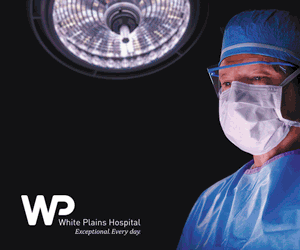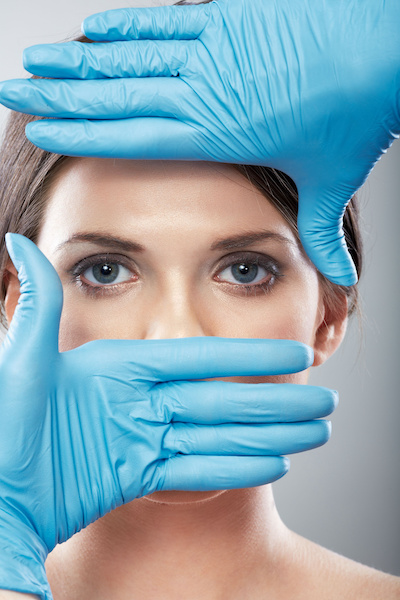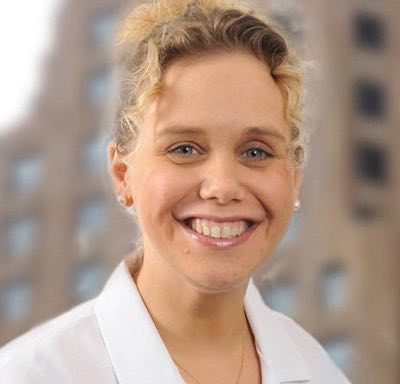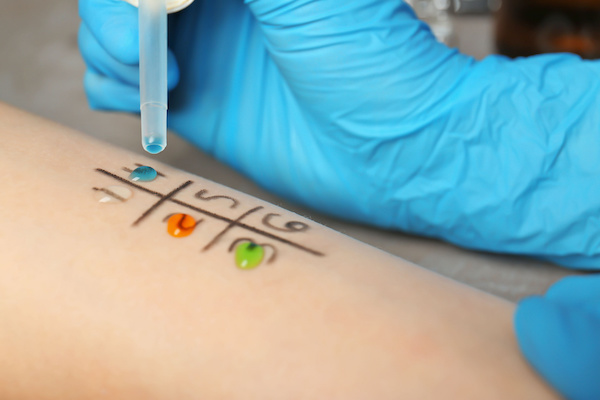Staying Healthy Through the Holidays
- Details
- Written by: Joanne Wallenstein
- Category: Health
 The following was contributed by Dr. Kay Lovig, Section Chief, Division of Endocrinology, White Plains Hospital
The following was contributed by Dr. Kay Lovig, Section Chief, Division of Endocrinology, White Plains Hospital
Eating right and taking care of yourself can often be a challenge during the holiday season. Here are some suggestions on just how to do that.
The constant hustle and bustle of the holiday season is filled with lots of temptation, and can cause many of us to go astray from our regular diet and fitness routines. Complex family dynamics, expensive gift-giving, and less time and resources to focus on self-care can leave you feeling a little less than jolly. To ease some of that holiday stress this year and stay the course with healthy habits, Dr. Kay Lovig, chief of endocrinology at White Plains Hospital, advises you follow these simple tips:
1. Anticipate your own holiday hot buttons
Perfection is not the goal of the holidays — joy is! Cramming more into your already crazy schedule can push you over the edge, so consider what is really doable before you commit. Remember that you don’t have to do everything. Sometimes it’s okay to take a time out, even during the holiday season.
2. Keep self-care your top priority
It’s easy to let this slip when you’re even busier than usual — but this is also the time you need to prioritize your own well-being. Keep it simple and incorporate little things into your daily routine to stay healthy inside and out. Make time for exercise to boost your mood, relieve stress and help ward off the holiday weight gain.
 3. Plan ahead
3. Plan ahead
Instead of fighting off the fruitcakes and trying to resist all of the temptations of the season, try to walk the line between self-denial and overdoing it by simply planning ahead. “If you know you’re in for a cocktail party filled with decadent appetizers and drinks, be extra vigilant about what you take in earlier in the day, and possibly the day after,” she says. And one more key tip on having a healthy holiday season: “Share the love and split dessert.”
Dr. Kay Lovig specializes in endocrinology and metabolism with a focus on women’s health, weight management, thyroid disorders and diabetes. For an appointment, call 914-849-7900.
Face Forward: Rewards (and Potential Risks) of Altering Your Appearance
- Details
- Written by: Dr. Anisha R. Kumar
- Category: Health
 Written by Dr. Anisha R. Kumar, Otolaryngology, Facial Plastic and Reconstructive Surgery
Written by Dr. Anisha R. Kumar, Otolaryngology, Facial Plastic and Reconstructive Surgery
Plastic and reconstructive surgery have obviously come a long way since they were first performed by the ancient Egyptians some 3,600 years ago. But while the science and technology used have made great advances since then, some of the basic principles remain the same.
Facial aesthetic medicine encompasses everything from skincare and injectables to laser treatments and surgical procedures. Since each patient is different, each of those elements can be personalized to that patient’s individual needs and wants. And it can be done at almost any age and gender – while historically things like Botox and injectable dermal fillers were seen as appealing primarily to women, a lot more men are now doing it.
There is a wide range of options that focus on specific aspects of the face and neck, and a patient’s concerns. Some of these can be done in an office setting and others are better suited for the operating room, but in general, surgery is similar to injectables because it targets specific anatomic structures for rejuvenation. Examples include brow lift, upper and lower eyelid surgery (blepharoplasty), cheek implants, chin implants, facelift, neck lift, rhinoplasty, liposuction, and much more.
Lasers are used to resurface specific layers of skin. Non-ablative, or less invasive, lasers heat the underlying layer of skin – the dermis – to stimulate collagen production. Ablative lasers destroy the outer layer of skin – the epidermis – to regenerate younger-looking skin. Lasers can also be used to target for specific concerns like sunspots, rosacea, scars, and spider veins.
There are other therapies like IPL (intense pulsed light) for skin maintenance that are good options for younger patients. But, again, laser procedures are used discriminately. Not all lasers can be used on every skin type.
As for Botox, many people don’t realize that it is actually a brand name, like “Kleenex” or “Xerox.” People use those words as generics, but they actually refer to a specific product. Botulinum toxin is an injectable neurotoxin used to reduce fine lines and wrinkles by effectively paralyzing or freezing the muscle beneath the injection spot – the forehead, under the eyes, the cheeks, etc.
Dermal fillers, as the name implies, are used to fill in wrinkles or to “plump up” features like lips and cheeks, or even to reshape certain parts of the face like the nose or cheeks.
The dosage and placement are of course very important. For a first-time patient, I usually start with the standard dose recommended by the manufacturer and, if that doesn’t have the desired effect, we can titrate the dose. But it also depends upon what the patient wants. All of our faces age with time, so it’s really a matter of what the patient is looking for.
Words of Caution
It is also important to note that, if a patient is pregnant, Botox and fillers are not recommended, as there hasn’t been enough research done to tell if those procedures are safe or not. With surgery, if someone has a heart condition, is on blood-thinning medications, or otherwise is at an increased risk of bleeding, they may not be the best candidate. Again, you have to treat patients on a case-by-case basis – there is no cookie-cutter approach.
What is needed, regardless of age, is a determination of whether the patient is medically fit to undergo a procedure. Are they allergic to what’s in a given injectable? When it comes to certain laser skin treatments, a patient may need to stop certain medications six months prior to treatment.
The same holds true for reconstructive surgery. In addition to doing my own aesthetic and reconstructive procedures, I will be doing joint cases with the other surgeons in our Otolaryngology/ENT department. For example, I will be doing complex facial reconstruction after cancer resection/removal. The cancer resection will be done by my colleagues, and I will do the reconstruction.
For patients who are undergoing sinus surgery and who need specialized structural support inside their noses for their breathing, my colleagues will be doing the sinus surgery, and I will be doing the surgery for nasal structural support. Again, these procedures are tailored for each individual patient.
Every face is unique and has different needs for rejuvenation, and even both sides of the same face may have minor structural differences. Therefore, it is imperative to consult with a provider who has the proper expertise to provide personalized care. It’s also important to consider the amount of time needed to complete a procedure, particularly when it comes to surgery – there can be several weeks’ worth of recovery time. Keep in mind that medicine can “reverse” the effects of aging to a degree, but unfortunately it can’t stop the process of aging for any of us.
Keep in mind that medicine can “reverse” the effects of aging to a degree, but unfortunately it can’t stop the process of aging for any of us.
You should also be aware that there may be several people in a given community who offer injections and laser treatments, but there are risks involved with each procedure. I always emphasize that you should put your trust in a trained, certified professional.
Dr. Anisha R. Kumar is the Director of Facial Plastic and Reconstructive Surgery at White Plains Hospital. For an appointment, call 914-849-3755.
November Is Diabetes Awareness Month: Watch Out for Signs of Neuropathy
- Details
- Written by: Dr. Michelle Castiello, Podiatry
- Category: Health
 Diabetic neuropathy is a type of nerve damage that causes pain and numbness in the hands, legs and feet of diabetics; in fact, diabetic neuropathy is estimated to affect as many as 50% of people with the disease.
Diabetic neuropathy is a type of nerve damage that causes pain and numbness in the hands, legs and feet of diabetics; in fact, diabetic neuropathy is estimated to affect as many as 50% of people with the disease.
Anyone with diabetes can develop nerve damage – which typically can occur within the first 10 years of a diagnosis – but certain factors increase your risk. Those include high blood sugar levels; being overweight; and having high blood pressure and/or cholesterol.
Symptoms of peripheral neuropathy – the type of diabetic neuropathy that affects the legs and feet – include:
• Numbness or reduced ability to feel pain or temperature changes
• Tingling or burning feeling
• Sharp pains or cramps
• Muscle weakness
• Extreme sensitivity to touch
• Serious foot problems, such as ulcers, infections, and bone and joint damage
Nerve damage combined with poor circulation can put you at risk of developing a foot ulcer – the initial event in more than 85% of major amputations that are performed on people with diabetes. Every year in the U.S., about 73,000 amputations of the lower limb not related to trauma are performed on people with diabetes.
If you experience any of these symptoms, don’t wait for your next appointment; see your podiatrist right away:
• Pain in your legs or cramping in your buttocks, thighs, or calves during physical activity
• Tingling, burning, swelling or pain in your feet
• A change in the color, temperature and/or shape of your feet
• Loss of hair on your toes, feet, and lower legs
• Dry, cracked skin on your feet
• Thickened, yellow, or ingrown toenails
• A blister, sore, or ulcer
Tips for maintaining healthy feet – for diabetics and non-diabetics both – can be found here.
Make sure to check your feet every day so that you can catch problems early and get them treated. Routine foot exams and early treatment greatly reduces your risk of amputation. Dr. Michelle Castiello is a podiatrist at White Plains Hospital Physician Associates, seeing patients at 600 Mamaroneck Avenue, Suite 102 in Harrison. To make an appointment, call 914-723-8100.
Dr. Michelle Castiello is a podiatrist at White Plains Hospital Physician Associates, seeing patients at 600 Mamaroneck Avenue, Suite 102 in Harrison. To make an appointment, call 914-723-8100.
Solving That Itch with a Scratch Test
- Details
- Written by: Joanne Wallenstein
- Category: Health
 The simple procedure, followed by a series of injections, can bring much-needed help to seasonal allergy sufferers.
The simple procedure, followed by a series of injections, can bring much-needed help to seasonal allergy sufferers.
The American College of Allergy, Asthma and Immunology estimates that more than 50 million people in the U.S. experience some type of allergic reaction each year. In many cases, those people frequently endure congestion, itchy eyes, a scratchy throat, and sinus-re¬lated issues. Adding to those frustrations may be the fact that they’re not even sure what they’re allergic to.
But answers, and relief, can be readily available through a scratch test, or prick test, to identify allergy triggers. The procedure, which is available onsite at Scarsdale Medical Group offices, involves a simple series of steps:
• The patient’s back or forearm is cleaned, after which a series of marks – typically around 60 – are made on it.
• A liquid extract is applied to each mark. The extracts contain proteins isolated from allergens such as ragweed, grasses, animal dander, dust mites, and mold.
• Using a needle, each mark is gently scratched to introduce the extract under the skin.
• After a brief wait, the marks are examined to see which ones develop a bump approximately the size of a mosquito bite, known as a “wheal,” with a corresponding red area, known as a “flare.”
• Using a ruler, each wheal is measured to see if any is longer than 4 millimeters – the length that indicates an allergic reaction.
All told, the entire procedure takes about 15 minutes. If the scratch test shows significant allergic reactions, a course of allergy shots is often the best treatment in providing significant relief.
Patients receive injections that contain a mixture of tiny amounts of their allergens. The shots are formulated at levels that stim¬ulate the immune system but do not cause a full-scale allergic reaction. With each visit, the patient is injected with higher concentrations of the allergens.
The allergy shots become effective very quickly. Within two weeks or so, many patients will feel relief from achy sinuses, postnasal drip, and itchy eyes. At about six months into the process, patients will be able to tolerate allergy shots in clinically effective strengths. The next step is to get maintenance injections weekly, eventually reducing their frequency to monthly.
Allergy skin testing can be done for all age groups to identify potential allergens. Indoor sensitization (dust and animal dander) can begin between six months and two years, while pollen sensitization develops between two and seven years old.
Knowing what you are allergic to can help you avoid those substance(s) in the future. And it’s not always a matter of merely solving recurring cases of the sniffles. Allergic conditions are one of the most common health issues affecting children in the U.S., and it is estimated that a severe allergic reaction (anaphylaxis) to food  generates 90,000 emergency room visits a year. Allergies are also the sixth leading cause of chronic illness in the U.S.
generates 90,000 emergency room visits a year. Allergies are also the sixth leading cause of chronic illness in the U.S.
Understanding what to avoid – and taking a 15-minute test to reach those conclusions – is, to coin a phrase, nothing to sneeze at.
Dr. Kirk Sperber is an allergist and immunologist at Scarsdale Medical Group in Harrison. or an appointment, call 914-723-8100.
Million Meal Project Launches to Address Global Food Insecurity
- Details
- Written by: Joanne Wallenstein
- Category: Health
 The Blumberg family of Edgemont is launching the Million Meal Project with a goal of packaging and distributing 1,000,000 meals to families in need all over the world by 2028. The organization will partner with global nonprofit Rise Against Hunger and other local organizations to host monthly meal packaging events in the Edgemont community over the next five years. The first event will be held on Saturday, November 19 at Greenville Elementary School.
The Blumberg family of Edgemont is launching the Million Meal Project with a goal of packaging and distributing 1,000,000 meals to families in need all over the world by 2028. The organization will partner with global nonprofit Rise Against Hunger and other local organizations to host monthly meal packaging events in the Edgemont community over the next five years. The first event will be held on Saturday, November 19 at Greenville Elementary School.
“Our family volunteered earlier in the year for a Rise Against Hunger event hosted by the Edgemont Community Council at Seely Place Elementary School and was inspired,” said Casey Blumberg, Wilson Blumberg, and Elyse Blumberg, co-founders of the Million Meal Project. “We had a lot of fun with friends at the event and were impressed with how easy it was to volunteer our time and make such a difference in so many lives.”
"The Million Meal Project's goal to package one million meals over the next five years will be incredibly impactful for the people Rise Against Hunger serves around the world. Our work to end hunger starts with a meal because, for those facing hunger, a meal can provide needed nutrition and support education, health and opportunities for bright futures," said Richard Kearney, Interim CEO of Rise Against Hunger.
The Million Meal Project welcomes any local organizations and families to participate by co-hosting events throughout the year or joining for larger events. The organization will also be donating $0.38 per meal packaged. Donations are welcome at any of the meal packaging events as well as on the Million Meal Project’s website.
To volunteer or donate at the Million Meal Project’s launch event on November 19, please click here. For more information, contact Matt Blumberg at [email protected].










